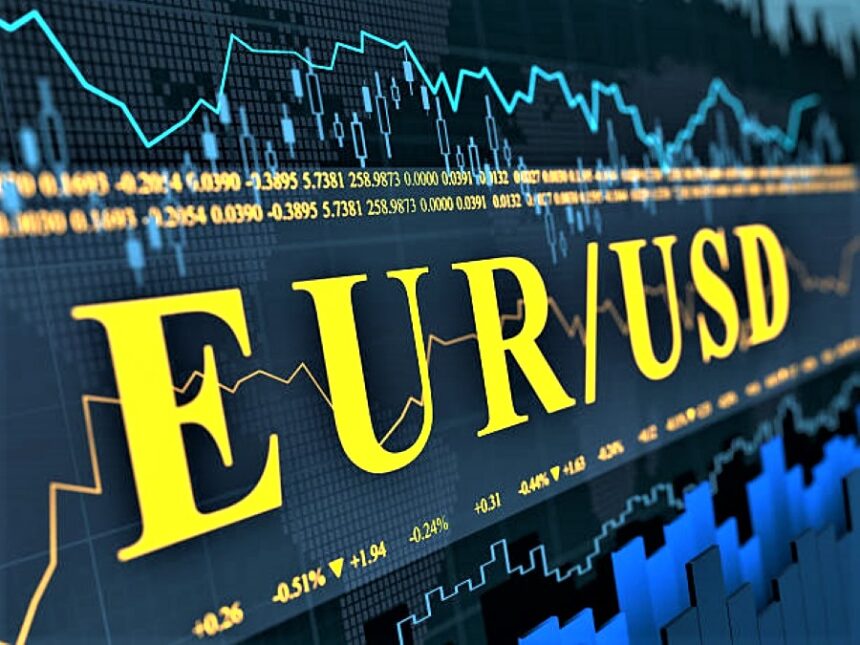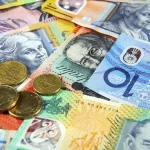EURUSD Climbs Above 1.1450 as Softer US CPI Undermines Dollar Strength.
The EURUSD pair pushed higher on Wednesday, buoyed by a softer-than-expected US inflation print that undercut demand for the greenback. As the dollar slid across the board, the euro capitalized on renewed bullish momentum, briefly approaching the psychological 1.1500 handle.
Softer US CPI Sparks Dollar Selloff
The primary catalyst behind the EURUSD rally was the release of May inflation data from the United States, which came in slightly below market expectations.
According to the US Bureau of Labor Statistics, headline Consumer Price Index (CPI) rose by 0.1% month-over-month, bringing the annual CPI to 2.4%, up from 2.3% in April but below the 2.5% forecast.
More notably, core CPI, which excludes volatile food and energy prices, also increased by just 0.1% on the month, holding steady at 2.8% year-over-year—again, slightly softer than the anticipated 2.9%.
These figures suggest moderating inflation pressures, providing investors with another reason to price in potential Federal Reserve rate cuts in the coming months. As a result, the US Dollar Index (DXY) slid beneath the 99.00 level, losing roughly 0.3% intraday
EURUSD Extends Gains Toward 1.1500
In response to the subdued inflation data, EURUSD climbed above the 1.1450 level, gaining more than 35 basis points intraday. The pair was last seen trading around 1.1465, continuing a bullish streak that started earlier this week.
The euro also posted solid gains against most major currencies, as seen in the currency performance heat map:
| Base \ Quote | USD | EUR | GBP | JPY | CAD | AUD | NZD | CHF |
|---|---|---|---|---|---|---|---|---|
| EUR | +0.30% | — | +0.18% | +0.20% | +0.25% | +0.32% | +0.40% | +0.04% |
The euro gained the most against the New Zealand Dollar (+0.40%), followed by Australian Dollar (+0.32%), while its move against the Swiss Franc remained muted.
Fed Cut Bets Strengthen Amid Cooling Price Pressure
The lower CPI print has prompted markets to reassess the Federal Reserve’s monetary policy path. Fed officials have repeatedly emphasized that inflation needs to show sustained progress toward the 2% target before rate cuts are considered.
However, with both headline and core inflation data suggesting waning pricing pressures, traders are pricing in increased odds of a rate cut as early as September 2025.
Fed Funds Futures now imply nearly a 70% probability of a September rate cut, up from 58% a week ago. A more dovish outlook generally weighs on the dollar, while boosting risk-sensitive currencies like the euro.
Trump-China Trade Remarks Fail to Rescue USD
On the geopolitical front, US President Donald Trump commented on the US-China trade relationship via Truth Social, attempting to boost sentiment regarding an ongoing trade agreement.
“Full magnets, and any necessary rare earths, will be supplied, up front, by China. Likewise, we will provide to China what was agreed to, including Chinese students using our colleges and universities (which has always been good with me!),” Trump said.
“We are getting a total of 55% tariffs, China is getting 10%. Relationship is excellent!”
Despite the seemingly upbeat tone, markets largely shrugged off the remarks. Investors appeared more focused on domestic inflation trends and monetary policy outlook rather than political rhetoric, especially given past volatility in US-China negotiations.
Treasury Auction in Focus Later Today
While there are no other major economic releases scheduled for Wednesday, traders are keeping an eye on the US 10-year Treasury note auction, which could influence broader market sentiment and impact the dollar.
A strong auction might support yields and offer temporary relief to the greenback. Conversely, weak demand for the benchmark bond could deepen USD losses and potentially push EURUSD closer to 1.1500 or beyond.
Bond market dynamics have become increasingly pivotal in recent months, as investors use Treasury yield shifts as a gauge of Fed expectations and global capital flows.
Euro Area Outlook Remains Neutral to Positive
From the eurozone side, the fundamental backdrop has remained relatively neutral. European Central Bank (ECB) policymakers have maintained a cautious stance, with recent commentary suggesting no imminent rate changes following the June rate cut.
ECB President Christine Lagarde emphasized that any further easing would be data-dependent and not part of a preset path. With eurozone inflation still above target in several key member states, including Germany and France, policymakers may adopt a wait-and-see approach in upcoming meetings.
Nevertheless, the ECB’s decision to front-load cuts in June while the Fed remains on hold has narrowed the monetary policy divergence between the eurozone and the US—a development that supports the euro in the short term.
Technical Analysis: EURUSD Targets 1.1500 Resistance
From a technical standpoint, EUR/USD has broken through key resistance at 1.1450, with bullish momentum accelerating.
Key levels to watch:
- Immediate Resistance: 1.1500 (psychological barrier)
- Next Resistance: 1.1530 (March 2024 high)
- Support Level: 1.1410 (50-day moving average)
- Next Support: 1.1375 (former breakout zone)
The Relative Strength Index (RSI) on the 4-hour chart remains below 70, suggesting there’s still room for additional upside before conditions become overbought.
A clean break above 1.1500 could open the door toward 1.1530, especially if USD weakness persists into the New York afternoon session or after the Treasury auction.
Market Outlook: Can EURUSD Sustain the Rally?
The near-term trajectory of EUR/USD will hinge on several factors:
- US rate cut expectations – dovish Fed commentary or weak data could reinforce euro strength.
- Bond market response – lower yields will weigh further on the dollar.
- Geopolitical updates – any surprises from China, the EU, or the Trump administration may introduce volatility.
For now, the path of least resistance appears upward, especially with investors increasingly comfortable fading the USD as inflation shows signs of peaking.
Key Takeaways
- EUR/USD surged above 1.1450 as US inflation data came in softer than expected.
- US CPI rose 2.4% YoY in May, missing the 2.5% forecast, while core CPI held steady at 2.8%.
- The US Dollar Index fell below 99.00, losing 0.3% intraday.
- President Trump’s trade remarks failed to offer support to the dollar.
- Eurozone fundamentals remain neutral, with ECB rate expectations largely priced in.
- Technical outlook favors further upside toward the 1.1500–1.1530 range.
[faq-schema id=”39844″]









